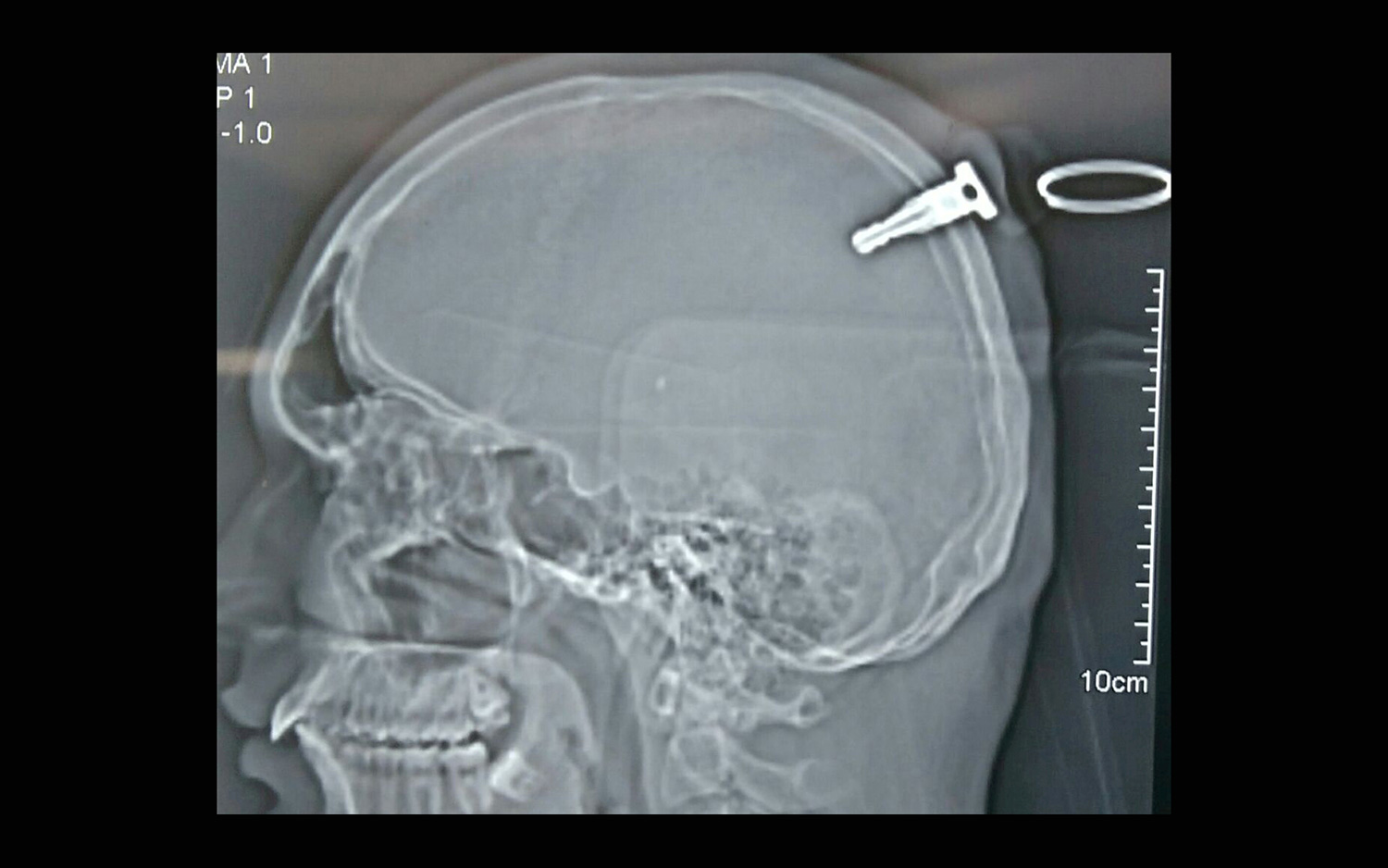This Man Had a Key Lodged in His Brain. Here's How He Survived.

A young man in India survived having a key lodged more than an inch into his skull, according to news reports. But how does someone survive an injury like this?
The man, a 19-year-old from the Ahmednagar district of Maharashtra, in India, was impaled with a motorcycle key during a brawl in his village on April 18, according to South West News Service (SWNS). At the hospital, doctors performed a brain scan, which showed that the key had pierced about 1.5 inches (3.8 centimeters) into the man's brain, said Dr. Ashish Bhandari, the administrator of Anand Rishi Hospital, where the patient was treated. The man underwent a 3.5-hour surgery to remove the key.
"Luckily, he didn't suffer internal bleeding, and there was no damage to his brain," Bhandari said. "Had there been severe internal bleeding, it could have cost him his life."
Dr. Justin Thomas, a neurosurgeon at Northwell Health's Southside Hospital in Bay Shore, New York who was not involved with the case, said it is possible to survive a penetrating injury to the brain like this. Survival "depends primarily on the location in the brain where the object is lodged" and whether there's damage to adjacent arteries or draining veins of the brain, Thomas said. [12 Amazing Images in Medicine]
In particular, a person has a better chance of surviving a penetrating injury if it avoids an area of the brain called the superior sagittal sinus, which is one of the largest vein channels; it drains blood from the brain and runs in the midline (or center line) of the brain, Thomas told Live Science.
Damage to the superior sagittal sinus could result in bleeding in the brain or a blood clot that could lead to a stroke, he said.
People can survive a penetrating brain injury if surgery is "done in such a way that the object can be removed while minimizing damage to the surrounding brain structures" and minimizing the risk of bleeding after surgery, Thomas said.
Get the world’s most fascinating discoveries delivered straight to your inbox.
The man was discharged from the hospital three days after his surgery and is recovering well, according SWNS.
Original article on Live Science.

Rachael is a Live Science contributor, and was a former channel editor and senior writer for Live Science between 2010 and 2022. She has a master's degree in journalism from New York University's Science, Health and Environmental Reporting Program. She also holds a B.S. in molecular biology and an M.S. in biology from the University of California, San Diego. Her work has appeared in Scienceline, The Washington Post and Scientific American.




